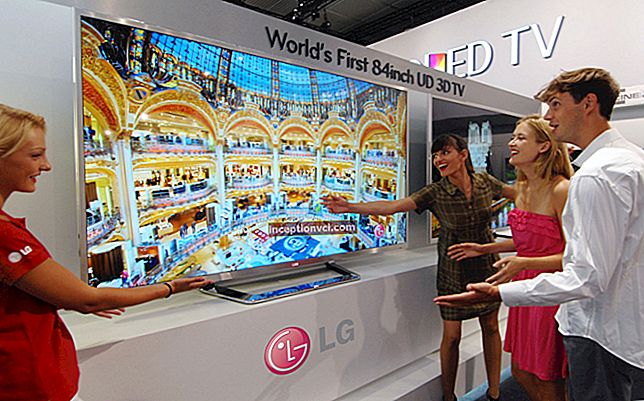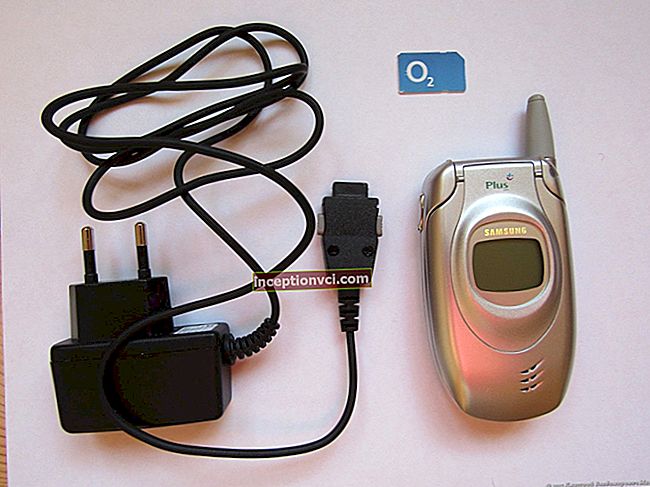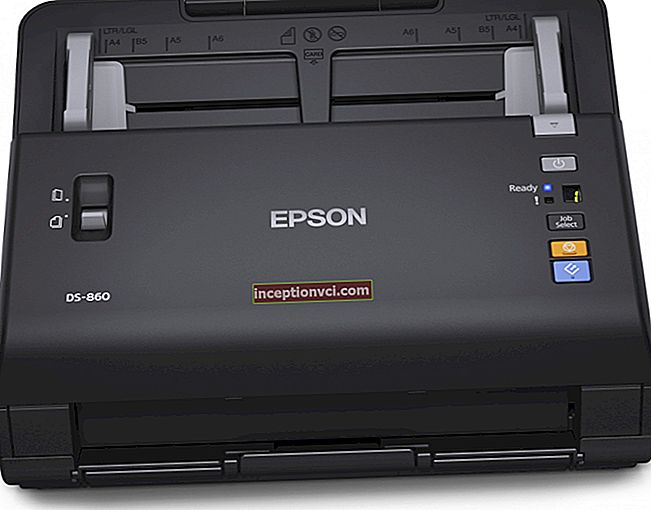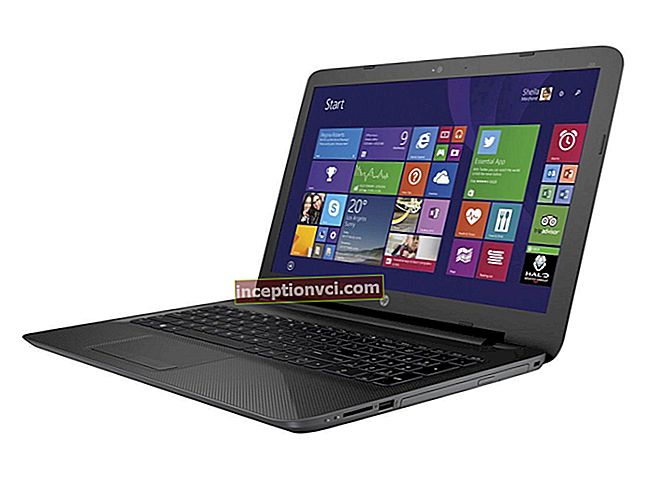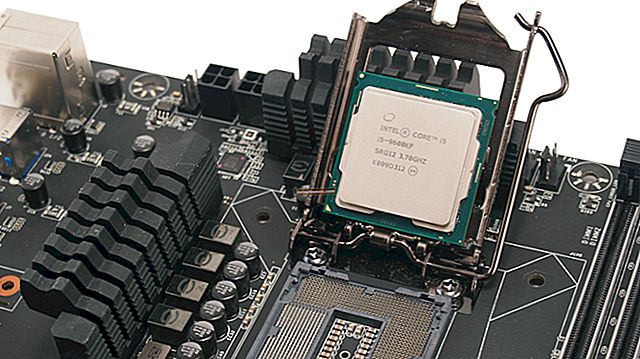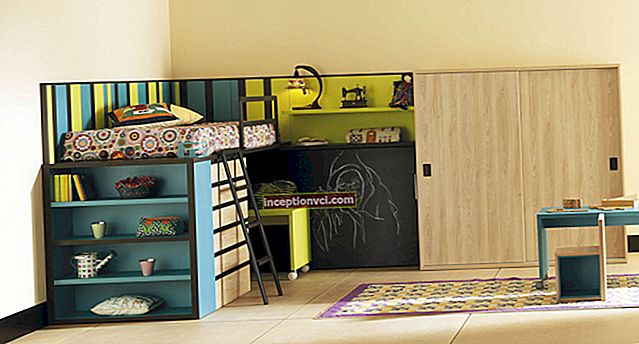Introduction
In our review, we take a look at the annual update of Dell's highly popular UltraSharp series of monitors. Following the recent launch of the new 24 "U2412M, we were presented with a 23" Dell U2312HM display, which we will be testing. It is a 2012 update for the U2311H monitor. The name itself has changed little - the letter "H" still means the aspect ratio of 16: 9, and the "M" is introduced to denote the use of an electronic IPS panel. In line with the latest market trends and as an upgrade, Dell has decided to combine IPS technology with white LED backlighting (W-LED). Features and specifications have largely remained the same as the older model.

Specifications and capabilities
Below is the details of the screen specifications:
The size: 23 "WS (58.42 cm)
Color depth: 16.7 (6-bit + RSVS)
Aspect ratio: 16:9
Color spectrum: Standard range ~ SRGB; 73% NTSC, 96.9% SRGB, 76.0% Adobe RGB
Resolution: 1920 x 1080
Coating: Anti-glare, matte
Pixel pitch: 0.265 mm
Interfaces: 1x DVI-D (HDCP), 1x D-Sub, 1x DisplayPort
Response time: 8ms (gray to gray)
Design: Matte black panel and stand. A silver version is also available - a silver colored bezel and a black stand.
Static contrast: 1000:
Ergonomics: -21 ° / + 4 ° tilt, height 130 mm
Dynamic contrast: 2,000,000:
Features of the: 4x USB 2.0 ports
Brightness: 300
VESA compliant: Yes (100mm)
Viewing angles: 178/178
Physical dimensions: (WxHxD with stand, maximum height) 546.4 x 493.0 x 185.4 mm
Panel type: E-IPS
Weight: 6.47Kg
Without stand: 2.96kg
Backlight technology: W-LED
Accessories: DVI cable, VGA cable, power cable, USB cable
The Dell U2312HM offers a fairly standard set of computer connections with one DVI-D and one D-Sub available. There is also a DisplayPort interface, which is a useful feature as it is becoming more popular in graphics cards and external multimedia devices. Like its predecessor, the monitor does not have an HDMI interface.
The screen comes with VGA and DVI cables. A DisplayPort cable could also be helpful, but unfortunately it is missing. The display also has a 4-port USB 2.0 hub, which has been a distinctive feature of the UltraSharp series for a long time. No additional features like ambient light sensors, built-in speakers, card reader, etc. the monitor does not have.
Design and ergonomics
The U2312HM is made of matte black plastic used for the panel and stand. Panel edges are thin and attractive, 17 mm wide along all sides. In the center of the bottom edge there is a shiny, silver Dell logo. There are no other inscriptions on the front panel anymore. The edges of the screen are slightly rounded. Personally, I like the design, the monitor looks very nice, strict and solid on the table. There is also a silver model with a matching frame and the same black stand.

Power on / off and menu control buttons are located in the lower right corner on the front of the screen. These are real buttons, not touch buttons, as they were on the 24 "U2410 and 27" U2711. They practically merge with the surface of the monitor and are not too conspicuous, but they work very well and have clear responses. When the screen is on, the power indicator is blue and amber in standby mode.

The screen coating is standard - matte, anti-reflective. Some users complain about modern IPS panels with overly aggressive coatings. Personally, I don't think the coverage on this screen is bad, but this is, of course, subjective. Coverage appears to be slightly better than some of Dell's previous models. It is comparable to the U2412M.
On the back of the screen, we again see matte black plastic. The monitor maintains a fairly slim profile that looks very attractive. At the very top is the circular Dell logo. The connection interfaces are at the bottom. While the front of the booth is matte black, we see a silvery plastic in the back, which looks pretty nice and enlivens the overall picture.The bracket also has a useful cable hole.

On the bottom side of the screen there are video interfaces for connecting DVI, D-Sub and DisplayPort, as well as a power cable connector. The screen has a built-in power supply. This makes it a bit thicker than some of the ultra-thin external PSU monitors you can find on the market. There is also one connector for the Dell Soundbar. On the bottom there is 1x USB for PC connection (cable included) and 2x USB 2.0 ports for connecting external devices. In addition, 2x USB 2.0 ports are located on the left edge of the screen for quick access.

The stand is supplied separately from the screen. However, connecting them is incredibly easy - you simply slide the bracket into the slot on the panel, it snaps into place.
The screen also complies with the VESA standard (100 x 100 mm), which allows it to be placed on the wall.
From the side of the Dell U2312HM, it has a fairly thin profile and looks pretty slender.

The stand is a regular plastic stand but offers a decent range of ergonomic adjustments. Moreover, it is very sturdy and well built. There are no backlashes. The quality materials make a very good impression. The monitor offers us a wide range of tilt adjustment, which allows it to be tilted 4 ° forward and 21 ° backward. Adjustment movement is smooth, although slightly stiff when tilted down.
The height adjustment range is also very good. In its most extreme position, the bottom of the panel is about 47mm from the table, so you can position the screen at a very low height if you need it. Full height adjustment range allows the bottom of the bezel to be positioned 177mm from the table. This is even slightly larger than the U2412M's adjustment range, which has a maximum height of 115mm. Again, the movements are easy, as well as the tilt.
Rotating the monitor is also very convenient and easy to use. The base remains firmly on the table while the panel swings from side to side.
The rotation function to switch between landscape and portrait orientation is also available, but it is a little difficult and a little harsh. In general, the full range of adjustments is available to us, and they are all fairly easy to use.

The screen materials are of high quality and attractive design in my opinion. Removing the U2312HM back panel confirms the use of the LG Display LM230WF3-SLD1 panel in the monitor.

OSD Menu
Like the U2311H, the Dell U2312HM has real menu selection buttons, not a touchscreen version. They are located on the right side of the screen and work very well and responsively. The OSD is pretty much identical to the U2412M.
Pressing any of the 4 buttons brings up the Quick Launch menu, which provides quick access to a selection of presets and brightness and contrast. Then you can choose to enter the main menu or simply exit the quick launch menu. Also, at your discretion, you can configure two quick settings from the main menu.

Within the preset menu mode, the following options are available: standard settings, multimedia, cinema, games, text, color, and custom settings.
The main menu is represented by various subsections at the bottom left side, as shown in the figure below. In the upper right corner, there is a "Energy Usage" bar, which gives you a visual representation of the power consumption at any given time. This feature was also implemented in the U2412M model. It is based on the OSD brightness menu, which controls the backlight intensity and therefore has a direct bearing on power consumption. The "Brightness / Contrast" section speaks for itself. The "Auto setup" section works only when using an analog D-Sub connection.

The "Input Sources" menu item allows you to manually select which interface to use if you do not want to use the very useful "Auto Select" option.
Color Settings allows you to change settings related to color profile and gamma, but you may find it more useful to have access to preset color modes.
The preset modes listed here are the same as those available through the quick launch menu.
In the "Display Settings" section, you can change the aspect ratio of the monitor. There are options - 16: 9, 4: 3 and 5: 4. You can also enable dynamic contrast control in this menu section if you are in a suitable preset mode where it can be activated. You can also switch the "Energy Smart" function on and off here. You can personalize the section by changing the keyboard shortcuts.
You can also access the monitor's factory menu, but be careful when changing settings that you don't know about and having no idea how to change everything back. You use this menu at your own peril and risk! You can access the menu by holding the top two keys while turning on the monitor. Here you can define RGB levels for each color from the preset temperature modes, and there are several other parameters related to display operation.

Overall, the OSD menu offers a decent array of features, is intuitive and well structured. There are no questions here.
Power consumption
Dell's new PowerNap software is on the CD that shipped with your monitor. This software is a power saving mode for your monitor that allows users to set the monitor to "Screen Dim" or "Sleep" modes when your computer goes into screen saver mode:
1. "Screen Dim" - The display is dimmed to the minimum brightness level when the computer is in screen saver mode.
2. "Sleep" - The monitor goes to sleep when the computer is in screen saver mode.
In terms of power consumption, the manufacturer indicates the following specifications: typical use is 30W in normal mode and 70W at maximum (with Dell speaker, maximum brightness and active USB). In standby mode, the screen uses less than 0.5W.
We tested this ourselves and found that the screen uses 24.8 watts of power while the default is set to 75% brightness. After calibration, where we adjusted the brightness to 20% and therefore the backlight intensity, this figure was reduced to 19.3 watts. In standby mode, the screen uses only 0.6 watts of electricity. This is quite comparable to other W-LED models we have tested.
Color accuracy, black depth and contrast
The Dell U2312HM uses the LG Display LM230WF3-SLD1 IPS electronic panel, which is capable of producing 16.7 million colors. The panel itself actually uses 6-bit High Frame Rate Control (FRC-) color to produce 16.7 colors. This differs from the usual 8-bit IPS matrix, but these measures are taken to achieve a lower price in modern budget displays.
The U2312HM uses a white light-emitting diode (W-LED) backlight. The color space of this screen is approximately SRGB. Examining the panel's detailed specifications confirms that the screen covers 73% NTSC, 76% Adobe RGB and 96.9% SRGB space.
Out of the box, the performance of the U2312HM was sufficient. The gamma of the monitor matches the SRGB space very closely. The brightness was set to a high level of 215 cd / m2, which is not very comfortable for everyday use. At this high brightness, the black depth was pretty good at 0.25 cd / m2. This gave us a static contrast ratio of 868: 1, which is good for an IPS panel, although not as good as the Dell U2412M (1106: 1) or the U2311H, which defaults to 995: 1.
Color accuracy was pretty good with the factory settings. Some minor adjustments in the Brightness menu helped to improve this figure a little more. The out-of-the-box settings should be sufficient for most casual users.Either way, you can simply adjust the brightness to suit your work environment.
Dynamic contrast
The Dell U2312HM has a Dynamic Contrast Ratio (DCR) feature that boasts a 2,000,000: 1 (2 million: 1) specification. Dynamic Contrast Ratio enables automatic screen backlight control based on content. The backlight is increased in bright images and decreased in dark images. DCR is only available in the Movie and Game presets.
As the test showed, it makes no sense to use the DCR function in the U2312HM monitor at all. There is no noticeable change in backlight intensity when switching between images of different levels of white and black, and even when switching between almost completely white and almost completely black. Nevertheless, this function can work, but only in the most unreal and extreme conditions. As with the Dell U2412M, Asus ML239H and LG IPS231P models, if you turn on an all-black screen, the feature “works”. You can see the changes when viewed, which take about 2.5 seconds. This is faster than the changes on the U2412M monitor, which gave ~ 4.5 seconds.
It seems that under normal operating conditions the DCR function simply does not work. There is a disappointing trend with this marketing gimmick.
Viewing angles
The viewing angles of the Dell U2312HM are very good, as you would expect from an e-IPS panel.
The horizontal angles give a very wide field of view with a slight shift, which actually becomes noticeable at an angle of about 45 °. At more extreme angles, the image gets a little darker, but it's actually not as noticeable as some of the other electronic IPS panels we've tested, including the Dell U2412M. Dark areas become a little more washed out, although this is already affected by the mediocre contrast ratio.

There is a white glow in the black image, but this should not be a problem under normal conditions. This image was taken in a darkened room to showcase the wide angle white light.

The brightness uniformity in the U2312HM is very good. There are minimal changes compared to an average of 120 cd / m2. Brightness ranged from 125 cd / m2 (center left) to 108 cd / m2 (right). 86% of the screen showed only 5% deviation from the standard and 97% was within 10% deviation. This is a great result, but it can vary from one instance to the next.
Backlight uniformity
As usual, we also tested a completely black screen in a darkened room. There is practically no backlight leakage here. They are visible at small deviations from the angles, but they are not critical and you will not notice them in practice. Good result at a relatively low cost of the display.

Response time
The Overdrive feature, available through the factory screen menu, improves response times and is enabled by default. The U2312HM shows less motion blur than the LG IPS231P despite having a 5ms specification on the screen. The U2312HM exhibits a 5ms low level of blur (gray to gray) similar to the Asus ML239H, although it unfortunately has more noticeable dark plumes.
The responsiveness of the U2312HM should be sufficient for most gaming applications and shows good low blur levels. The new screen is a very good choice for a 23 "IPS screen for gaming.
Input delay
As usual, we tested the monitor to determine the input lag level. Often, the input lag is very low and probably not too much of a problem in real world applications.
The input lag of the U2312HM is incredibly low, actually the lowest we've ever seen on a TFT display. There is practically no latency at all. Most measurements show 0ms lag when compared to CRT monitors. Excellent work from Dell in bringing input lag to such a low level!
Films and videos
Below are the performance results in video applications:
- The 23 "screen size makes it a smart choice for a multimedia display, although it is smaller than modern LCD TVs.
- 16: 9 is more suitable for video than 16:10 screens, as they leave smaller borders in movies.
- 1920 x 1080, supports 1080p HD resolution.
- DVI digital interface, supports HDCP for any encrypted and protected content
- Optional DisplayPort, although HDMI could be provided as a popular interface for external Blu-ray / DVD devices.
Black depth and contrast are good for an IPS panel, although not quite as well as some other models. Detail in dark scenes and shadow detail should not be lost too much.
- Dynamic Contrast Ratio is available, but it does nothing in practice, unfortunately.
- The preset "Film" brightness mode can be turned on in the menu, which makes the image a little cooler than in standard mode and provides access to the DCR mode (which, as we said, does nothing).
- Good pixel response times, which should deal with fast moving objects in movies without too much trouble.
- Wide viewing angles thanks to the electronic IPS panel. In practice, this means that several people can look at the screen simultaneously from a variety of different angles.
- Very good and ergonomic adjustments for a comfortable position for watching movies.
- No significant leaks of the panel backlight showed.
- No built-in stereo speakers, but display is compatible with Dell Soundbar.
- No Picture-in-Picture (PiP) and Picture-by-Picture (PBP) modes on this model.
Conclusion
In general, there is not a huge difference between the new and the old model. Ultimately, we are offered the same features and specifications with the only significant change being the move from CCFL to W-LED backlighting. For the end user, this doesn't really mean any tangible difference. The profile is slightly thinner and the power consumption is slightly lower, but this should hardly surprise you in everyday use.
The Dell U2312HM gives us pretty much everything we've come to expect from Dell UltraSharp screens. It was nice to see some interesting new features, and also that the capabilities of many older models were retained. In terms of performance, the display impressed in some aspects. In particular, the input lag was incredibly low, the default color settings required almost no adjustments, and the response time was good for the fastest games. This makes the monitor one of the more attractive 23 "IPS models we have tested. On the other hand, I was a little disappointed at the rather low contrast ratio of 710: 1. That's not bad for an IPS panel, but not what we were hoping to see given the metric. other recently tested screens, including the 24 "Dell U2412M.
